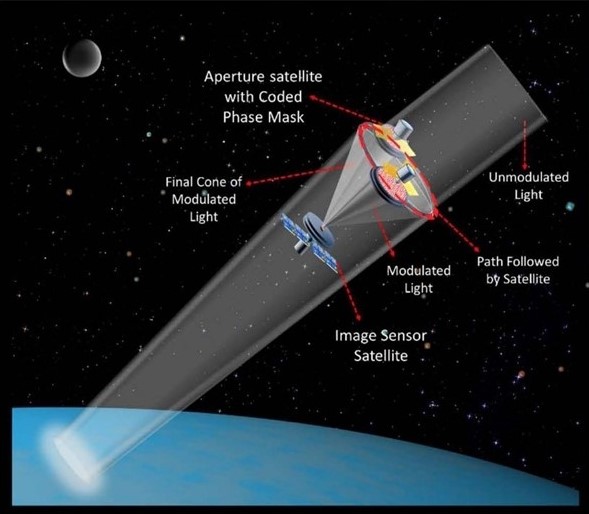Ben-Gurion University researchers have developed a new satellite imaging system that stands to revolutionize the economics and imagery available from space-based cameras and even earth-based telescopes.
In an article published in the December issue of Optica, the researchers introduced Synthetic Marginal Aperture with Revolving Telescopes (SMART), and demonstrate that several nanosatellites the size of milk cartons arranged in a spherical (annular) configuration could work in unison to collect imagery combining imagery from parts of each lens.
Angika Bulbul, a Ph.D. candidate under the supervision of Prof. Joseph Rosen in the Department of Electrical and Computer Engineering, says her research shows that several previous assumptions about long-range photography were incorrect.
“We found that you don't need the entire telescope lens to obtain the right images," Bulbul said. “Even by using a partial aperture area of a lens, as low as 43%, we managed to obtain similar image resolution to the full aperture area of mirror/lens-based imaging systems. Consequently, the huge cost, time and material needed for gigantic traditional optical space telescopes with large curved mirrors can be slashed."
To demonstrate the capabilities of SMART, the research team built a miniature laboratory model with a circular array of sub-apertures to study the image resolution. They compared these images obtained from direct imaging system equipped with the same dimensions of the whole aperture. based on an array of annular sub-apertures.

BGU Postdoc fellow Dr. Vijayakumar Anand also contributed to the research article titled, Superresolution far-field imaging by coded phase reflectors distributed only along the boundary of synthetic apertures.
Media Coverage
Jerusalem Post